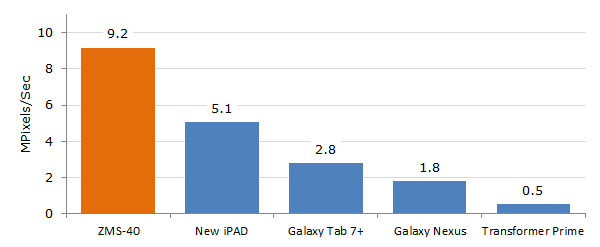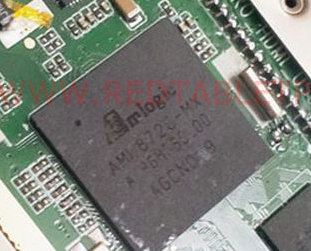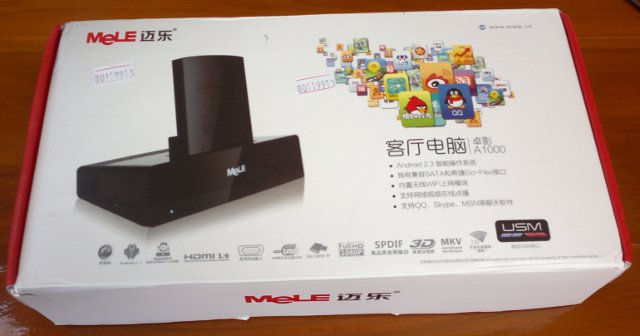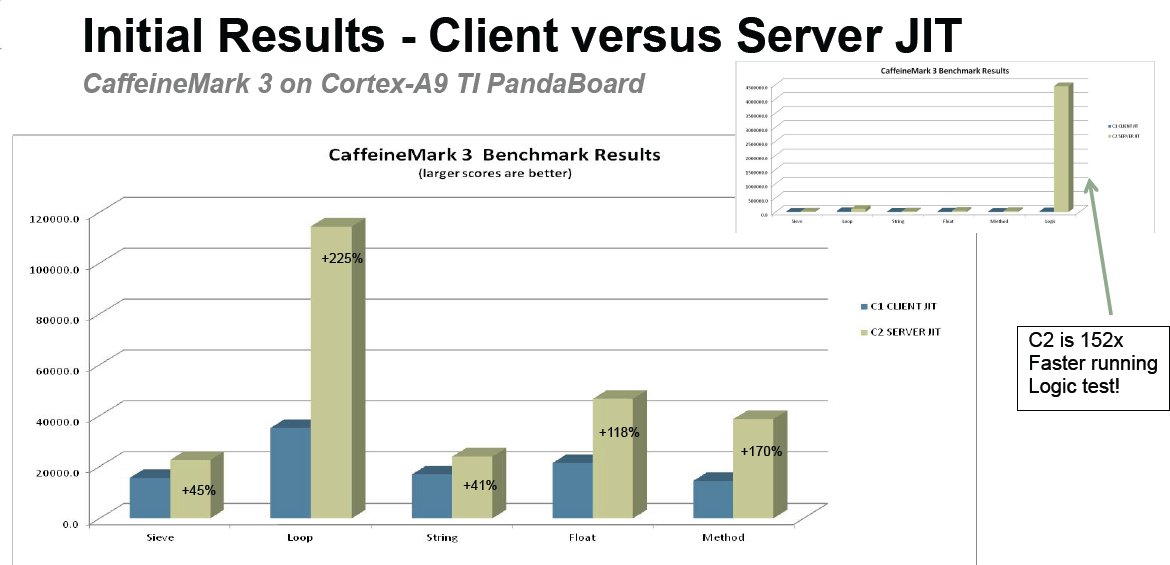Ziilabs released comparative GPU compute benchmark results for its ZMS-40 stem cells processor and made available its MandelMark floating point benchmark for Android 4.0 as an apk file. Since Ziilabs is using its own benchmark tool, which they released as a binary but did not open source, the results should be taken with a grain of salt. GPU Compute (aka GPGPU – General Purpose computing on GPU) is a technique to use the GPU to perform complex calculations usually performed by the CPU. MandelMark benchmark visualizes the solutions to the Mandelbrot to measure the floating point performance of mobile processors. Ziilabs compared their ZMS-40 Quad Core Cortex A9 processor with 96 stemcell cores to the following competitors: IPAD 3 – Apple A5X processor with a quad-core PowerVR SGX543MP4 GPU Galaxy Tab 7+ – Samsung Exynos 4210 processor with a quad-core ARM Mali-400 GPU Galaxy Nexus – TI OMAP 4460 processor […]
AMLogic Announces AML8726-MX Dual Core Cortex A9 Processor
Amlogic announced the availability of the AML8726-MX, a SoC based on a dual-core ARM Cortex-A9 MPCore processor clocked at 1.5 GHz with a Mali-400 MP GPU. It is the successor of the similarly named AML8726-M with a single core Cortex A9 @ 1 GHz. The company explains this SoC is particularly suitable for Over The Top (OTT) delivery, 3D Gaming and other Internet applications and targets the tablet, set-top-box and smart-TV markets. AMLogic AML8726-MX include 10/100/1000 Ethernet, 2x USB interfaces, 3-in-1 Card Reader support, Analog and digital video outputs, LVDS and T-CON (Timing Controller) with backlight control, digital video and camera interfaces. Wi-Fi is supported via external chipsets. Here are the highlights of the AML8726-MX family provided by AMLogic: A dual-core Cortex-A9 processor achieving over 7500 DMIPS of performance Direct to panel connection with advanced scaling, de-interlacing and picture quality enhancement Industry leading power management technology to extend battery life […]
Mele A1000 Android 2.3 STB Unboxing and Review
I’ve finally received the Mele A1000 media player I ordered 3 weeks ago. I mainly plan to use it as a Linux development platform for Allwinner A10 processor, but today I’ll just post some unboxing pictures and provide some feedback about the Android software running on the box. I received the device in the box below. (Sorry about the picture quality, I took pictures with my smartphone). Once you open the box, you’ll get see the set-top box, related accessories, a (not so useful) user guide in English and Chinese and what looks like a warranty card. Once you unpack everything you get the set-top box, 2.5″ hard drive case, composite cable, remote control (infrared) and 5V power supply. You’ll noticed some buttons on the remote control have markings in Chinese, this is where the user manual can be useful. You may already have seen the box itself (with clearer […]
Green Hills MULTI 6.0 Compiler Improves ARM MCU Performance by up to 40%
Last week at Design West 2012, Green Hills Software announced it had achieved the highest compiler performance scores ever certified by EEMBC CoreMark and that it outperformed the nearest competing compilers by 35.5% using its MULTI 6.0 – Compiler 2012. Benchmarks were completed on 3 ARM Cortex-M4 microcontrollers: Freescale Kinetis K60 MCU @ 100 Mhz – 35.5% improvement over nearest competitor. Freescale Kinetis K70 MCU @ 120 Mhz – 29.6% improvement over nearest competitor. STMicroelectronics STM32F417IGt6 @ 168 MHz – 34.7% improvement over nearest competitor. Since apparently it’s bad marketing to name competitors in press releases, I went directly to the source (EEMBC Coremark benchmark results) to check out the results and competitors (IAR and Keil) for Kinetis K60 MCU. The first thing you may notice is that there are 2 tests per compiler / MCU combination. That’s because there 2 test configurations: Code in internal Flash – Data in internal […]
LAVA Project Update – ELC 2012
Paul Larson of Linaro gives a LAVA Project update at Embedded Linux Conference 2012. Abstract: The Linaro Automated Validation Architecture (LAVA) is an open source framework used at Linaro for running automated tests on Ubuntu and Android based images, kernels, and more. I introduced LAVA at ELC a year ago. Since that time, considerable progress has been made on the project, and many new components have been added to it. This talk will briefly re-introduce the project to those who may not have heard about it, as well as introduce the new developments. You can download the presentation slides at elinux.org. Jean-Luc Aufranc (CNXSoft)Jean-Luc started CNX Software in 2010 as a part-time endeavor, before quitting his job as a software engineering manager, and starting to write daily news, and reviews full time later in 2011. www.cnx-software.com
TI Dual Core OMAP 5 Cortex A15 (800 Mhz) Twice as Fast as Nvidia Tegra 3 Quad Core Cortex A9 (1.3 Ghz)
Texas Instruments released a video showing the Web page loading time between TI OMAP 5 featuring two ARM Cortex-A15 cores at 800MHz (as well as specialized cores and accelerators), compared to a commercial device powered by a quad-core ARM Cortex-A9 processor at 1.3 GHz. They did not say it, but it’s got to be the Nvidia Tegra 3 since this is the only ARM Cortex A9 Quad-core processor with products available on the market today. In this benchmark, the devices handle 3 tasks simultaneously: Rendering 20 web pages Downloading videos Play a MP3 file The result is quite amazing, even hard to believe, with the OMAP 5 rendering the 20 pages in 95 seconds whereas it took the NVidia Tegra 3 over 200 seconds. I’m sure we’ll get an explanation of this performance difference at MWC 2012. Jean-Luc Aufranc (CNXSoft)Jean-Luc started CNX Software in 2010 as a part-time endeavor, before […]
Java SE Server Compiler now Available on ARM
Hardware and software development is going full-steam ahead for ARM servers. After Calxeda and AppliedMicro server SoCs – based respectively on Cortex A9 and ARMv8 architecture – have been announced and Ubuntu focusing further ARM development on Servers (Calxeda, Marvell and ARMv8), Oracle has released the Java SE server compiler – a throughput optimizing JIT compiler – for ARMv7. The ARMv7 server compiler is part of Java SE for Embedded 7 Update 2. First, some quick explanations on the 2 JIT compilers available for Java SE: Client: The client compiler is a fast start-up, lightly optimizing compiler. It’s better suited for smaller footprint systems and those running applications that require fast start-up such as Android applications. Server: The server compiler is optimizing code for throughput and produces highly-optimized code but incurs a start-up cost in achieving that. The server compiler only works on ARMv7 processors with hardfloat (VFPv3 FPU), and initial […]
Embedded Linux Optimization Techniques – ELCE 2011
Benjamin Zores, Alcatel-Lucent, describes different optimization techniques (focusing on hardware choice and software architecture) that can be used to improve the performance of embedded linux at Embedded Linux Conference Europe 2011. Abstract: This presentation provides a series of techniques that can be used for Linux embedded systems fine-grain tuning and performances optimization. Embedded systems are, by definition, always limited in terms of resources while people keep on trying to use desktop-oriented software on top of it. This talk presents a series of tips that can be used to actually measure, find and isolate bottlenecks in your system, whether it is by complete system profiling or software architecture optimization. Focus is also made on the traditional caveats that need to be avoided for your system not to be slow by design. You can also download the presentation slides. Jean-Luc Aufranc (CNXSoft)Jean-Luc started CNX Software in 2010 as a part-time endeavor, before […]







